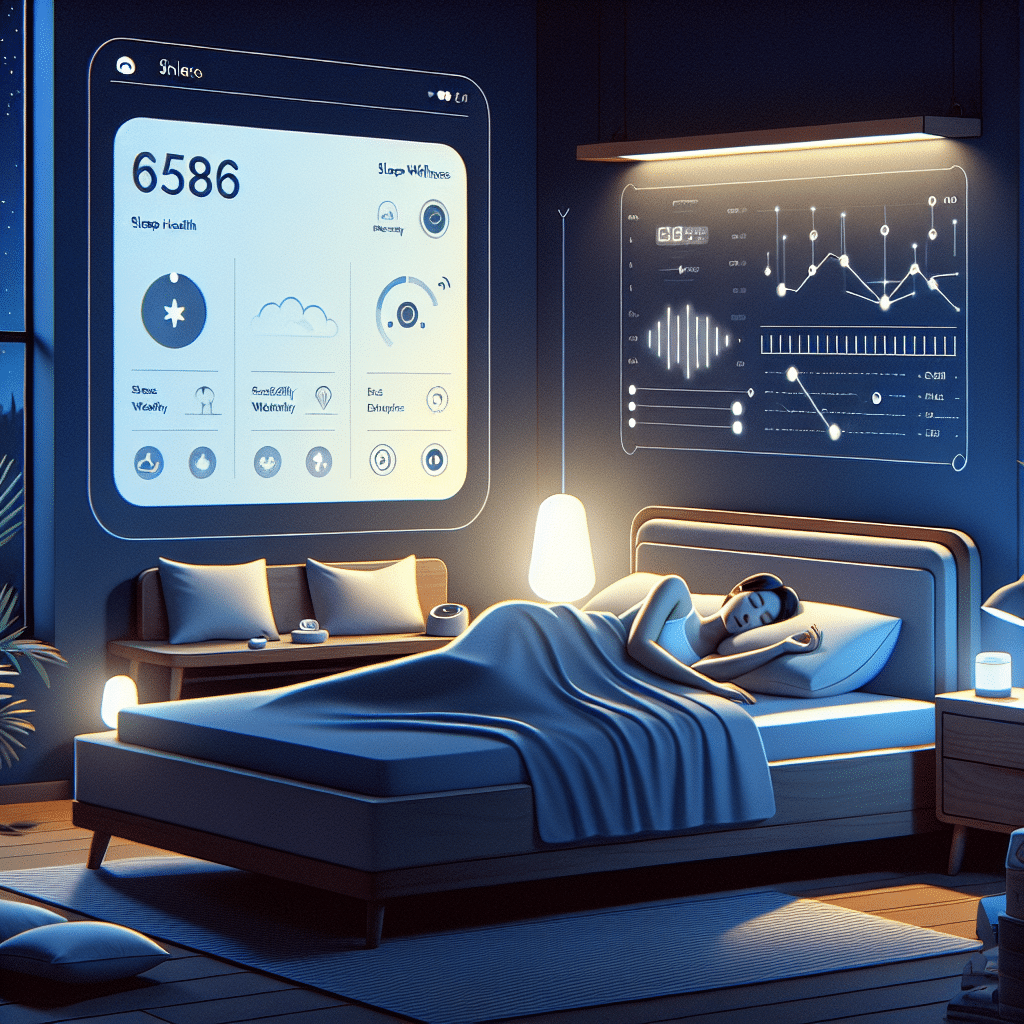Understanding Sleep Disorders
Sleep disorders encompass a range of conditions affecting sleep quality, duration, and patterns. Common sleep disorders include insomnia, sleep apnea, restless leg syndrome, and narcolepsy. These conditions can significantly impact daily life, leading to various health issues such as depression, anxiety, cardiovascular disease, and impaired cognitive function. Fortunately, recent advancements in technology offer innovative solutions for both diagnosis and treatment, empowering individuals to regain control over their sleep health.
Wearable Sleep Technology
Wearable devices have surged in popularity, becoming essential tools for tracking sleep patterns. Smartwatches and fitness trackers equipped with sleep monitoring features can provide users with insights into their sleep cycles, such as duration, quality, and disturbances. These devices typically utilize accelerometers to measure movement during sleep, helping to distinguish between light, deep, and REM sleep.
For instance, devices like Fitbit and Apple Watch analyze heart rate variability, providing deeper insights into the effects of lifestyle choices on sleep. Users can identify correlations between exercise, stress levels, and sleep quality, allowing them to make more informed decisions regarding their daily routines.
Moreover, wearables can encourage sleep hygiene by sending reminders to users to wind down before bedtime, as well as tracking their adherence to healthy sleep practices, such as maintaining a consistent sleep schedule.
Sleep Apps: Monitoring and Improvement
A variety of mobile applications complement wearable technology, providing actionable insights and personalized sleep management strategies. Apps like Sleep Cycle and Calm not only track sleep patterns but also analyze factors influencing sleep quality, such as diet, exercise, and stress levels.
Furthermore, these applications can incorporate features like sleep sounds or guided meditations designed to help users unwind. By catering to the individual needs of users, sleep apps can promote relaxation, making it easier to fall asleep and stay asleep.
Additionally, many apps utilize artificial intelligence (AI) to suggest personalized sleep routines based on collected data. This can enable users to identify optimal sleep environments and practice mindfulness techniques conducive to better sleep.
Light Therapy Devices
Light therapy plays a crucial role in regulating circadian rhythms, especially for individuals suffering from seasonal affective disorder (SAD), insomnia, or shift work sleep disorder. Light therapy devices simulate natural sunlight, which can help to reset the body’s internal clock and promote alertness during the day while improving sleep quality at night.
The use of light boxes, which emit bright light at specific wavelengths, has been shown to improve mood and energy levels throughout the day, allowing individuals to experience more restful sleep at night. These devices are particularly beneficial during the winter months when natural sunlight is limited.
Sleep Study Technology
Advancements in sleep study technology, including polysomnography and home sleep testing kits, have reshaped the diagnosis of sleep disorders. These tests monitor various physiological parameters during sleep, such as brain activity, eye movements, respiratory patterns, and heart rate.
In addition, at-home sleep tests have become increasingly accessible, allowing individuals to conduct sleep studies in the comfort of their own homes. Devices that measure variables like oxygen levels, airflow, and snoring enable healthcare practitioners to assess conditions such as sleep apnea effectively.
As technology progresses, telemedicine platforms are making consultations with sleep specialists easier and more convenient, reducing barriers to professional diagnoses and treatment.
Smart Mattresses and Pillows
Innovations in sleep products, such as smart mattresses and pillows, provide targeted solutions for sleeping disorders. Smart mattresses use integrated sensors to monitor sleep quality and adjust firmness levels according to the user’s sleeping position. Brands like Sleep Number offer customizable sleep solutions that can alleviate discomfort, ultimately leading to deeper and more restful sleep.
Similarly, smart pillows equipped with adjustable fill and built-in speakers for white noise can help users find the optimal sleeping posture while minimizing disruptions from environmental noises. Many smart pillows also sync with mobile applications to provide data on sleep quality, further enabling users to understand their sleep patterns better.
Cognitive Behavioral Therapy for Insomnia (CBT-I) Apps
Cognitive Behavioral Therapy for Insomnia (CBT-I) is a structured program designed to help patients overcome insomnia without the use of medications. Recent technology advancements have led to the emergence of CBT-I apps that deliver evidence-based strategies in an accessible format.
Apps like Sleepio and CBT-I Coach offer personalized modules to help users identify and change thoughts and behaviors contributing to insomnia. By addressing the underlying cognitive distortions, these apps empower users to develop a healthier relationship with sleep.
Interactive elements allow users to set goals, track progress, and remain accountable, creating a holistic approach to sleep management.
Virtual Reality (VR) and Sleep
Virtual reality technology is emerging as a unique approach to combating sleep disorders. VR gently immerses users in serene environments designed to reduce anxiety and promote relaxation—both of which are critical for restorative sleep.
Applications utilizing VR for sleep preparation often feature calming landscapes and sounds, allowing users to escape the stresses of everyday life. This highly immersive technology can ease the transition into sleep by providing an engaging way to disconnect from distractions before bedtime.
Telehealth Solutions
Telehealth has transformed how individuals access sleep disorder treatments, offering remote consultations with healthcare professionals. This approach can facilitate the timely diagnosis and management of sleep disorders, especially for those who may have difficulty finding specialists in their area.
Additionally, telehealth platforms often provide exercise, nutrition, and wellness consultations, addressing lifestyle factors that significantly influence sleep. By gaining access to comprehensive care from the comfort of one’s home, individuals are empowered to take charge of their sleep health.
Conclusion
The intersection of technology and sleep health holds immense potential, from wearables and apps to advanced sleep studies and telehealth solutions. These innovations offer practical and accessible resources for managing sleep disorders, promoting comprehensive health and well-being. By harnessing the latest technological advancements, individuals can gain valuable insights, tailored approaches, and effective treatment options for combating sleep disorders, laying the foundation for improved sleep and overall quality of life.
